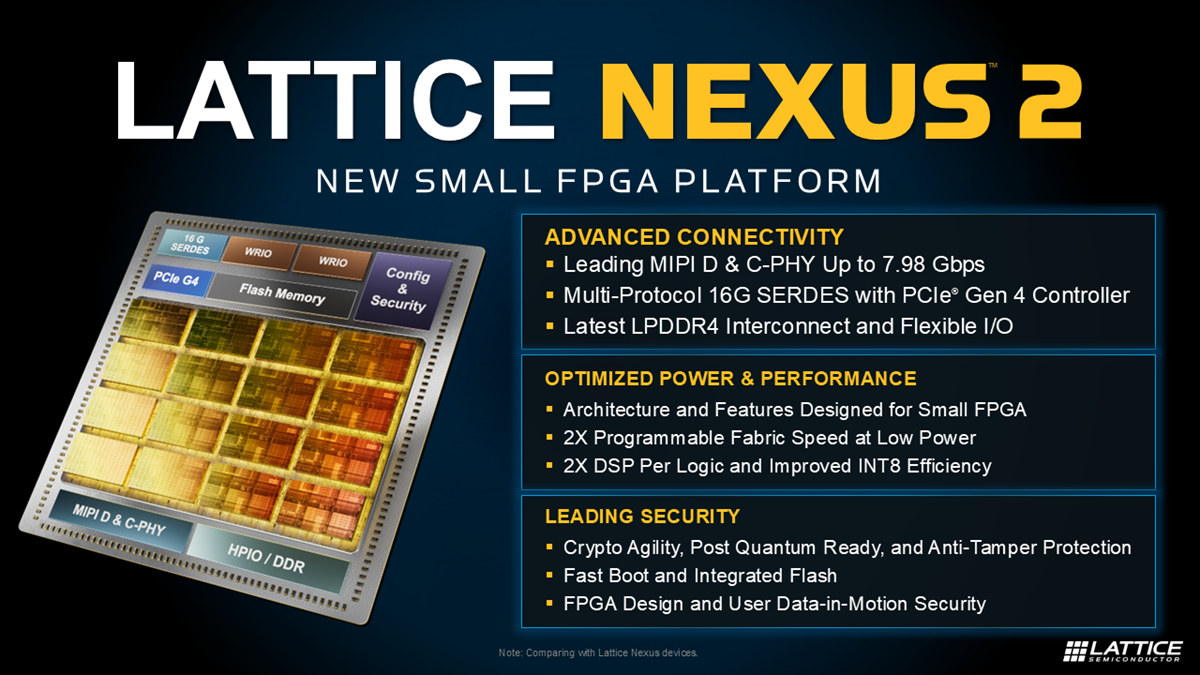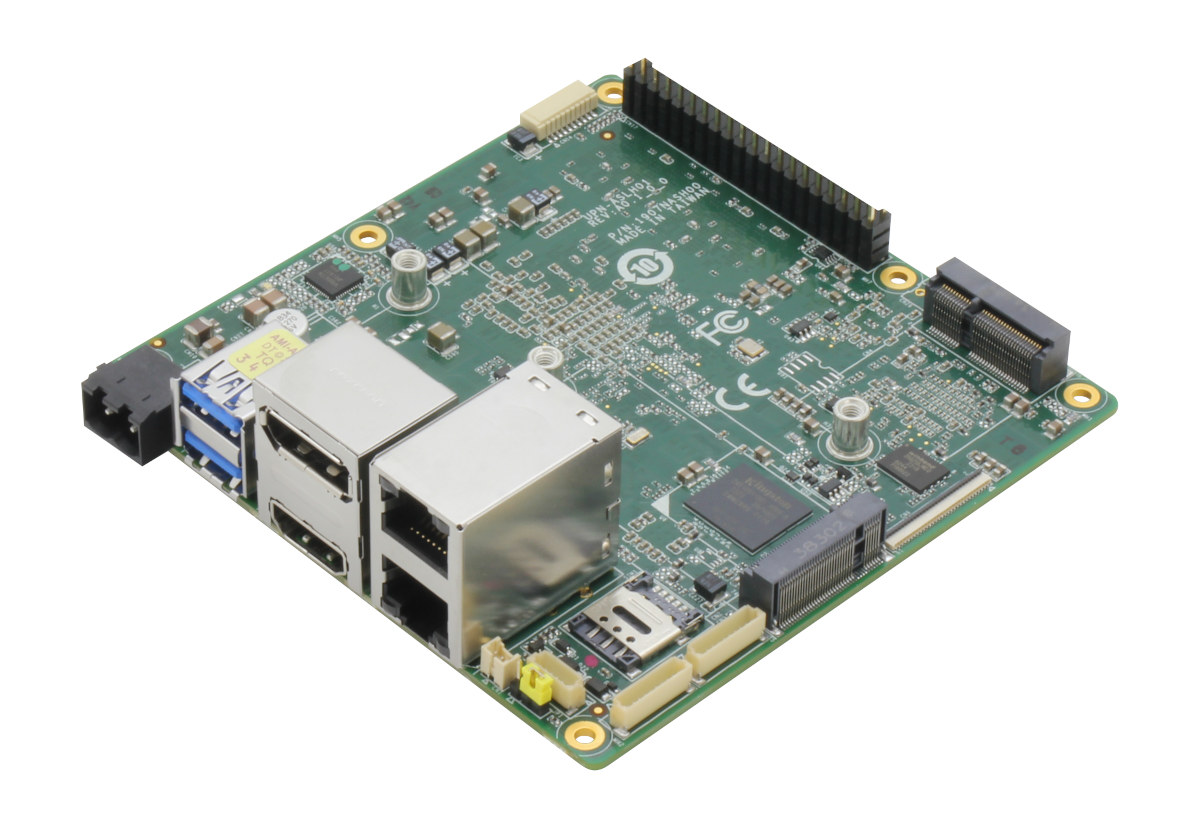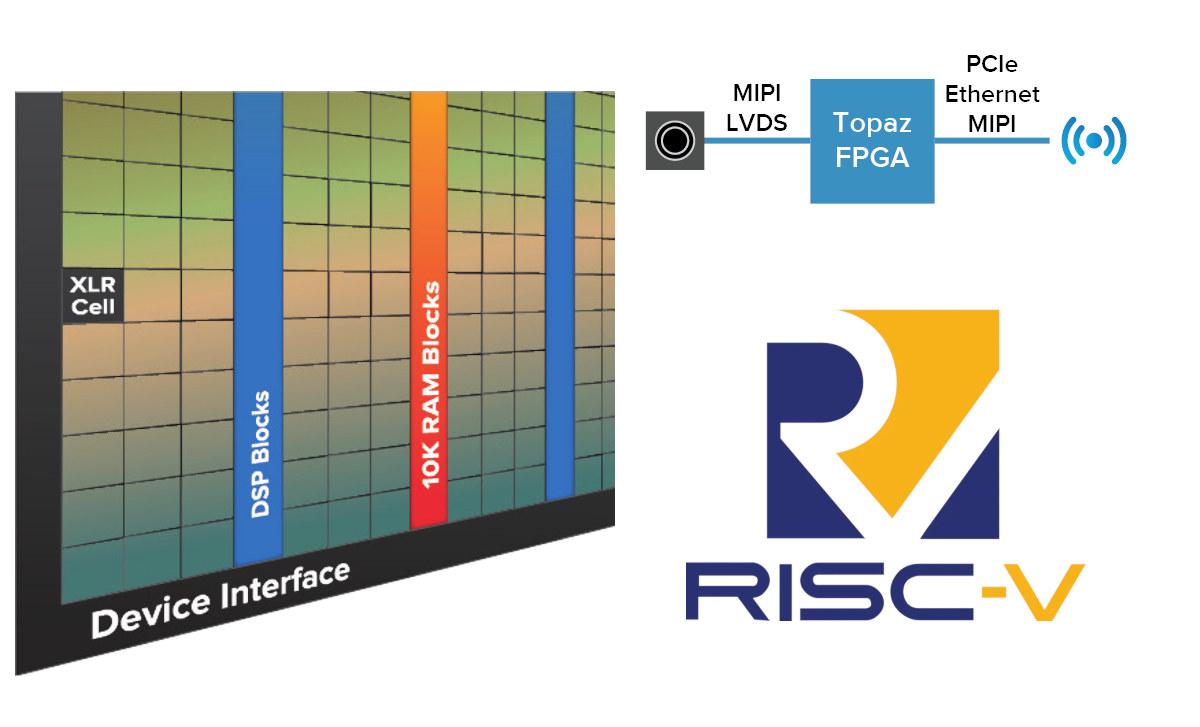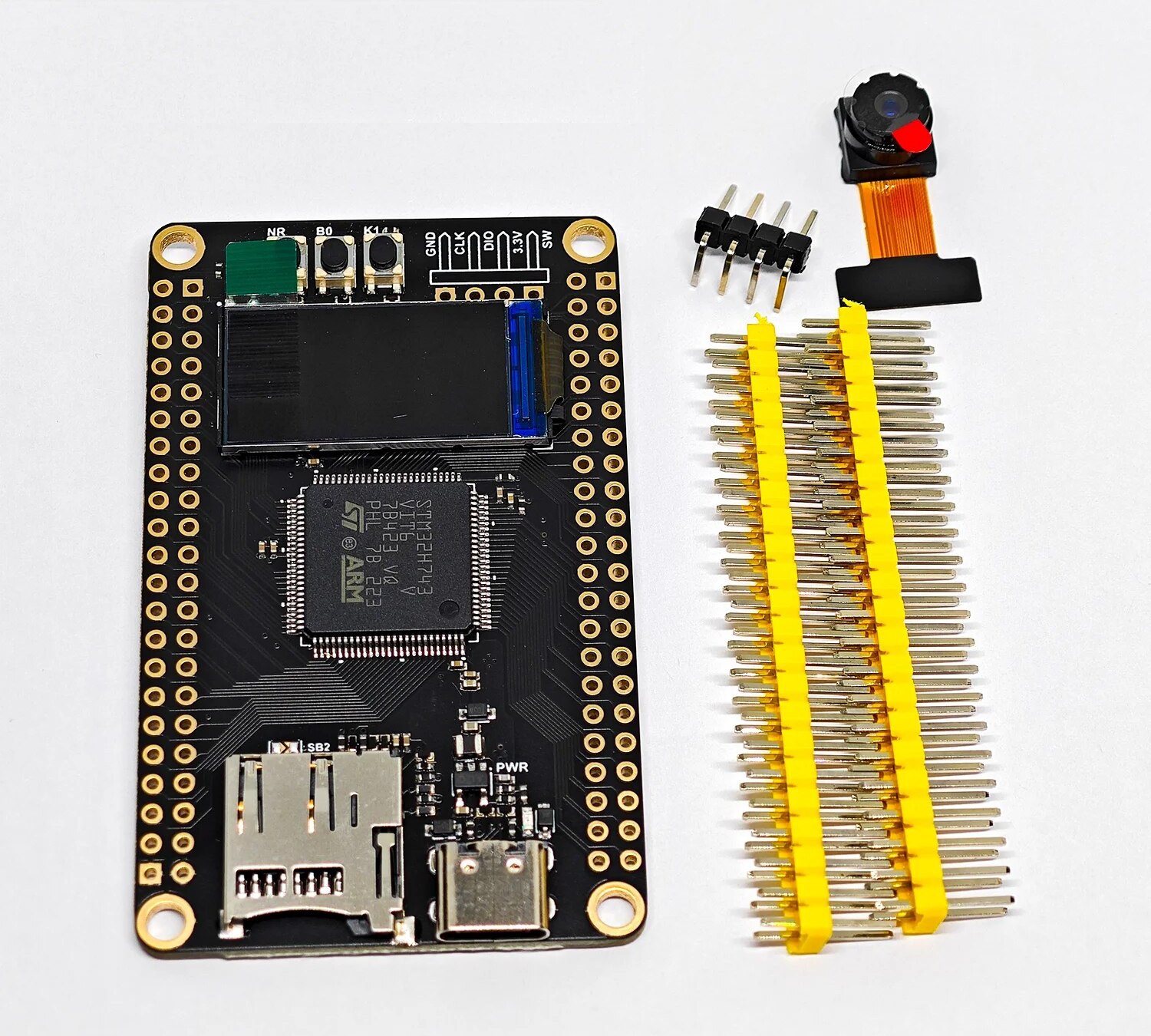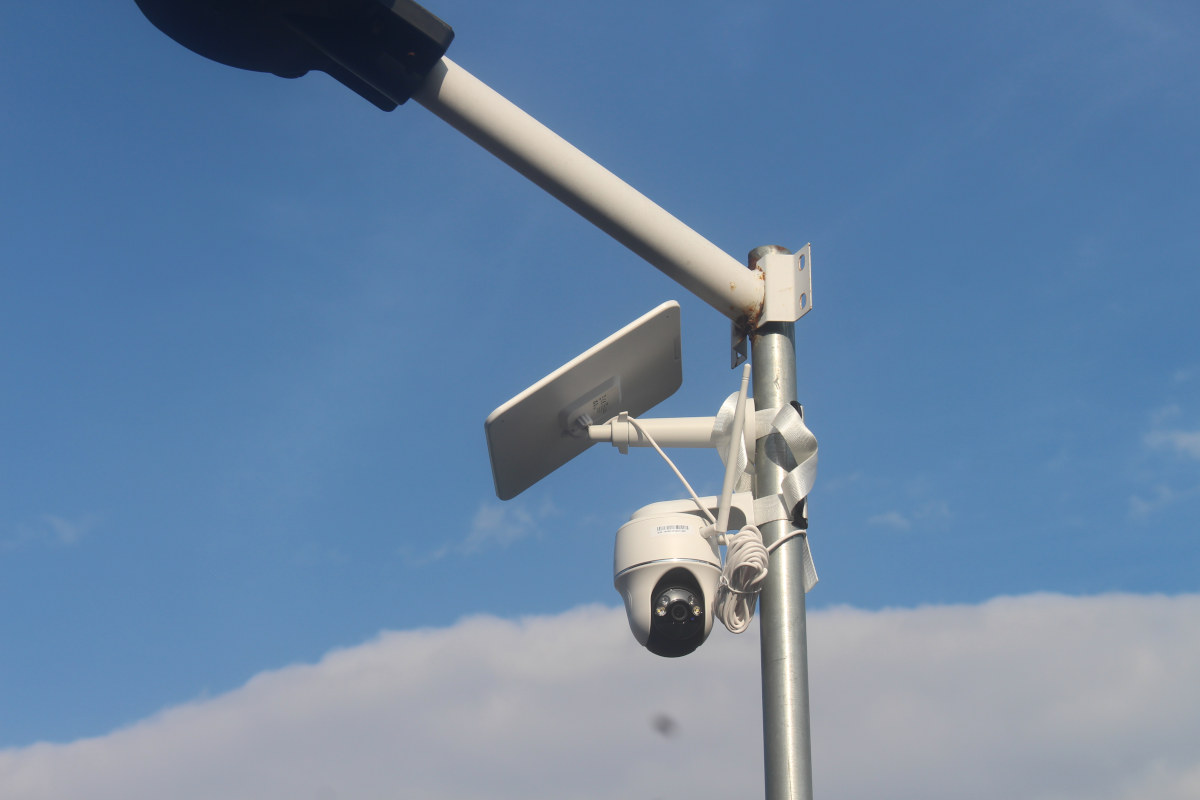Teledyne DALSA has recently announced the Tetra line scan camera family with 2.5GbE networking, up to 8K resolution, a line rate of up to 150 kHz, and offered in monochrome or color versions. Traditional cameras (aka scan camera) will capture a full frame, but line scan cameras will only capture one line at a time to scan an object or scene as it moves past the camera providing higher resolution image provided the speed of the scan and the motion of the object are syncrhonized, for instance, on a production line. Line scan cameras like the Tetra are typically used for quality control at the factory, document scanning, license plate scanning, and scientific research (e.g. satellite imaging). Teledyne Tetra specifications: Color cameras Tetra 2k Color – TL-GC-02K05T-00 Resolution – 2048 x 3 Pixel size – 14 μm Max line rate – 50 kHz x 3 Tetra 4k Color – […]
Lattice unveils Nexus 2 small FPGA platform, Lattice Avant 30 and Avant 50 mid-range devices, updated Lattice design software tools
Lattice Semiconductors announced several new FPGAs and software tools at the Lattice Developers Conference 2024 which took place on December 10-11. First, the company unveiled the Nexus 2 small FPGA platform starting with the Certus-N2 general-purpose FPGAs offering significant efficiency and performance improvements in this category of devices. The Lattice Avant 30 and Avant 50 were also introduced as mid-range FPGA devices with new capacity options to enable edge-optimized and advanced connectivity applications. Finally, the company releases new versions of Lattice design software tools and application-specific solution stacks to help accelerate customer time-to-market such for edge AI, embedded vision, factory automation, and automotive designs with Lattice Drive. Let’s have a look at the highlights of each announcement. Lattice Nexus 2 small FPGA platform and Certus-N2 FPGA Highlights and benefits of the Lattice Nexus 2 small FPGA platform: Power Efficiency against similar class competitive devices Up to 3x lower power Up […]
UP Squared Pro 710H SBC combines Alder Lake-N CPU with Hailo-8 AI accelerator for the machine vision market
AAEON UP Squared Pro 710H is a 4×4-inch SBC and developer board designed for machine vision applications with an Intel Processor N97 or Core i3-N305 Alder Lake-N CPU and a 26 TOPS Hailo-8 Edge AI processor. The single board computer supports up to two MIPI CSI cameras via a 61-pin connector and offers expansion capabilities through a 40-pin Raspberry Pi-compatible header and three M.2 sockets for 5G, Wi-Fi, and NVMe storage support. While it’s only designed to operate in the 0 to 60°C temperature range, it does have industrial features such as 12V to 36V DC input and two RS-232/422/485 connectors. UP Squared Pro 710H specifications: Alder Lake N-series SoC (one or the other) Intel Processor N97 quad-core processor up to 3.6 GHz with 6MB cache, 24EU Intel UHD Graphics Gen 12 @ 1.2 GHz; TDP: 12W Intel Core i3-N305 octa-core processor up to 3.8 GHz with 6MB cache, 32EU Intel […]
Vecow EVS-3000 AI computing systems combine 14th Gen Intel Core CPUs and MXM Graphics for Edge AI applications
Vecow has introduced the EVS-3000 series, a new line of AI computing systems powered by Intel Core i9/i7/i5/i3 (14th Gen) processors with embedded MXM graphics. These systems deliver high computing power, come with multiple PCIe slots for expansion, and support remote monitoring making them ideal for edge AI applications such as autonomous robotics, public security, and machine vision. The EVS-3000 series includes both fan and fanless models: EVS-3100, EVS-3200, EVS-3300, EVS-3400 without fans, and EVS-3100(F), EVS-3200(F), EVS-3300(F), EVS-3400(F) with fans. All systems are powered by Intel R680E chipsets and feature compact NVIDIA or AMD MXM graphics, with support for 2.5GbE LAN, Out-of-Band (OOB) management, and multiple PCIe Gen 4 slots. These systems deliver high performance for AI computing at the edge for applications such as machine vision and robotics. As you may know, we’ve previously covered several Vecow AI computing systems, including the TGS-1000 Series, SPC-9000 fanless embedded system, ECX-3200, […]
Efinix introduces the low-power Topaz RISC-V SoC FPGA family for “high-volume, mass-market applications”
Efinix Topaz is a new low-power RISC-V SoC FPGA family manufactured with the same 16nm TSMC process as the Efinix Titanium SoC FPGA, but optimized for high-performance in a low-power footprint, and targetting high-volume, mass-market applications. The Topaz SoC FPGAs provide fewer features than the Titanium family but still offer up to four RISC-V hard cores, PCIe Gen3, MIPI interfaces, LPDDR4, LVDS, and 12.5 Gbps transmitter with most features being optional and depending on the exact SKUs selected. Efinix Topaz key features and specifications: FPGA compute fabric Up to 326,080 logic elements (LEs) Up to 19.22 Mbits embedded memory Up to 1,877 10-Kbit SRAM blocks Up to 1,008 embedded DSP blocks Memory – 10-kbit high-speed, embedded SRAM, configurable as single-port RAM, simple dual-port RAM, true dual-port RAM, or ROM FPGA interface blocks Optional 32-bit quad-core hardened RISC-V block (RISCV32I with M, A, C, F, and D extensions and six pipeline […]
Cincoze DV-1100 is a rugged embedded computer with Raptor Lake or Alder Lake SoC for industrial and railway applications
Cincoze DV-1100 is a rugged embedded computer powered by a choice of Intel 13th Gen Raptor Lake or 12th Gen Alder Lake S Series embedded processors with up to 32GB DDR5 DO-DIMM memory, various NVMe and SATA storage options, up to three display interfaces, 2.5GbE and GbE networking, optional WiFi, Bluetooth, 4G LTE, and/or 5G wireless connectivity, six USB ports for expansion, and more. The system is housed in a fanless enclosure made of extruded aluminum with heavy-duty metal that’s good enough for 35W processors, but an additional fan kit is required for 65W processors. As a rugged embedded system designed for industrial environments, the Cincoze DV-1000 takes 9 to 48V DC input, integrates two RS232/RS422/RS485 COM ports, complies with the MIL-STD-810H shock and vibration standard plus various other industrial and railways standards, and can operate in a wide -40°C to 70°C temperature range. Cincoze DV-1100 specifications: SoC (multiple options) […]
WeAct STM32H743 Arm Cortex-M7 board ships with a 0.96-inch LCD and a choice of camera sensors
WeAct STM32H743 is a small MCU development board powered by a 480 MHz STMicro STM32H743VIT6 Cortex-M7 microcontroller and equipped with a small LCD and a camera connector taking OV2640, OV5640-AF, OV7670, or OV7725 camera sensors. The board comes with 2048KB flash and 1MB RAM built into the STM32H7 microcontroller, 8MB SPI flash, 8MB QSPI flash, a microSD for data storage, USB-C port for power and programming, a few buttons, and plenty of I/Os accessible through two 44-pin headers. WeAct STM32H743 specifications: MCU – STMicro STM32H743VIT6 Arm Cortex-M7 microcontroller at 480MHz with FPU, DSP, and MPU, 2048KB flash, 1MB RAM Storage – 8MB SPI Flash, 8MB QSPI Flash (bootable), microSD card socket Display – 0.96-inch TFT LCD based on ST7735 SPI display driver Camera 8-bit Digital Camera Interface (DCMI) with autofocus support OV2640 (1600×1200), OV5640-AF (2592×1944 with autofocus), OV7670 (640×480), or OV7725 (640×480) camera sensors are supported USB – 1x USB-C […]
Reolink Argus PT Ultra review – A solar powered 4K WiFi Pan-and-Tilt smart security camera
Nearly four years ago, I reviewed the solar-powered Reolink Argus PT pan-and-tilt security camera. The device worked (and still works) mostly fine, but it was at a time when security cameras did not implement AI features like people and vehicle detection just yet relying only on PIR motion sensors so I’d get plenty of false positives. The WiFi connection is not overly reliable either especially when I tried to access the camera from outside my house, something that does not happen with the PoE and 4G LTE models from the company. Reolink asked me whether I wanted to review the new Reolink Argus PT Ultra security camera with higher 4K resolution, dual-band WiFi support, as well as people, vehicle, and pet detection, and most of the same other features found on the older Argus PT. So I took up on the offer and I’ve used it for about one month […]



